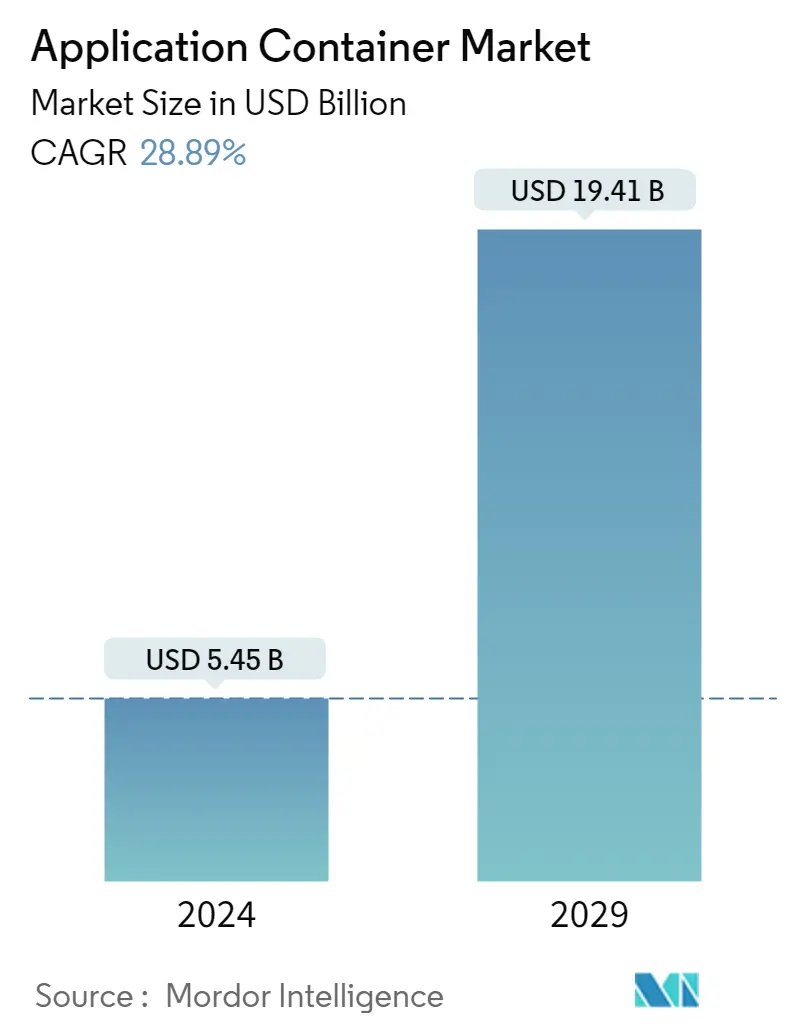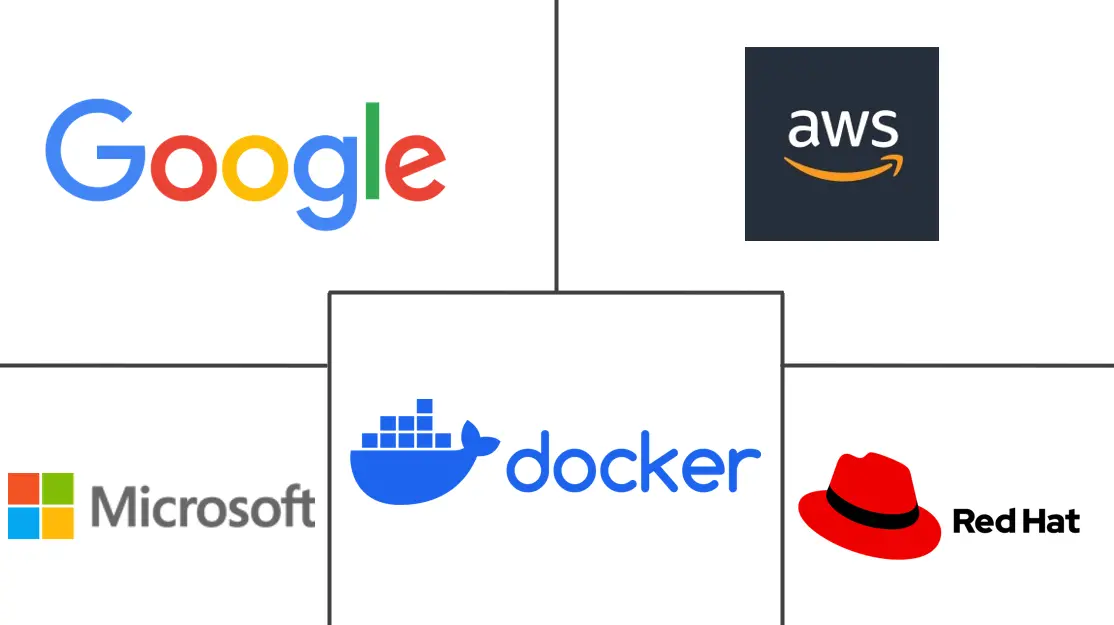Market Size of Application Container Industry

| Study Period | 2019 - 2029 |
| Market Size (2024) | USD 5.45 Billion |
| Market Size (2029) | USD 19.41 Billion |
| CAGR (2024 - 2029) | 28.89 % |
| Fastest Growing Market | Asia Pacific |
| Largest Market | North America |
Major Players
*Disclaimer: Major Players sorted in no particular order |
Need a report that reflects how COVID-19 has impacted this market and its growth?
Application Container Market Analysis
The Application Container Market size is estimated at USD 5.45 billion in 2024, and is expected to reach USD 19.41 billion by 2029, growing at a CAGR of 28.89% during the forecast period (2024-2029).
The market is anticipated to witness a steady rise in the number of containerized applications as businesses deploy their applications using containers on a regular basis. The numerous advantages of containers, such as their simplicity in packaging and deploying programs, their capacity to execute the same application across multiple environments, and their rapid and effective scalability, will be the driving force behind this movement. Moreover, the CNCF's 2022 study found that 44% of participants utilize containers for most or all production applications. Kubernetes is used to deploy at least some containers in production by half of those that utilize containers.
- The application container market has witnessed substantial growth and transformation in recent years. Application containers have become a critical technology in software development and deployment, offering a lightweight and efficient way to package, deploy, and manage applications. Several notable trends have driven the application container market in recent years. One of the most prominent trends is the adoption of hybrid and multi-cloud strategies. Organizations are increasingly leveraging containers to achieve flexibility and portability across diverse cloud providers and on-premises infrastructure, thus reducing vendor lock-in and enhancing adaptability to changing needs.
- Many organizations are leveraging containers to modernize their legacy apps, streamline infrastructure, and to be able to market their innovations faster. Containers primarily help speed up the applications to market because they offer faster, more consistent release cycles. The application is therefore developed in a container, packaged, tested, and deployed into production. As the application is already being tested in a runtime environment, there is no need for additional testing. Also, much less troubleshooting is required as containers are built to restart when they detect a failure.
- Several factors drive the application container market. Efficiency and portability are key drivers, as containers provide a consistent and efficient way to package applications, reducing compatibility issues and ensuring portability across different environments. Scalability is another critical driver, allowing organizations to adjust to varying workloads rapidly and user demands while optimizing resource utilization and reducing costs. The alignment of containers with DevOps and Agile methodologies promotes rapid development and deployment, enhancing an organization's competitiveness in a dynamic marketplace.
- Moreover, In October 2023, Sysdig and Docker announced the integration of Sysdig runtime insights into Docker Scout inorder to help developers prioritize risk and move faster. Docker and Sysdig will help customers reduce software supply chain noise, prioritize the insights that matter, and build leaner container images. Sysdig is the first runtime security integration into Docker Scout.
- However, containers can be more vulnerable to certain security risks, such as kernel exploits and shared resources vulnerabilities. Organizations are looking to implement robust security measures, and misconfigurations or supervised security practices can lead to significant security breaches. Also, managing containers at scale can be complex, especially in large enterprise environments. Organizations are expected to implement container orchestration tools like Kubernetes, including networking, storage, and other infrastructure components, which can introduce complexity and require specialized expertise.
- The COVID-19 pandemic imposed remote working scenarios, which have highlighted the importance of the cloud for business continuity with remote workforces and smooth online communication. Any enterprise's journey toward cloud transformation includes a container strategy. Numerous businesses adopted a container-first strategy because of the flexibility and cost savings that application containers provide, which is creating a demand for the market in the post-pandemic phase.
